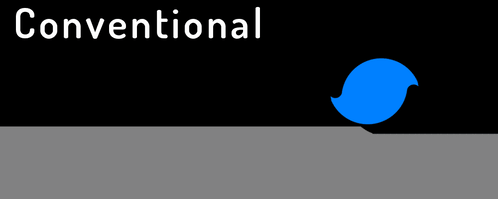Climb cutting and conventional cutting
When you move your reticule over a cut path, you will notice that the path animates with dotted lines prompting you to cut along the path in a particular direction. Origin selects this directions deliberately, in order to prevent climb cutting that can jeopardize the quality of your cuts.
The below animation shows conventional cutting: 
The cutter rotating clockwise (viewed from above) scrapes material away in front of it. This technique results in a predictable user experience, as changes in material density are felt through the handles as increased resistance. As the name suggests, conventional cutting is appropriate for most wood cutting.
The below animation shows climb cutting:

The cutter rotating clockwise (viewed from above) draws itself into the grey material as it moves to the right.
When cutting anything more than a fine finish pass, this technique is not advisable, as sudden changes in material density (knots, variable grain density, etc.) can cause the cutter to "grab," and move abruptly. Origin explicitly prevents users climb cutting by default.
Finishing passes are sometime performed as climb cuts, as when removing a very fine sliver of material they are able to produce better edge quality. And the small amount of material being cut is unlikely to cause a grab.
Tip: If you are experiencing poor cut quality, or a grabby cut experience, check the animations above to confirm that you are not climb cutting.